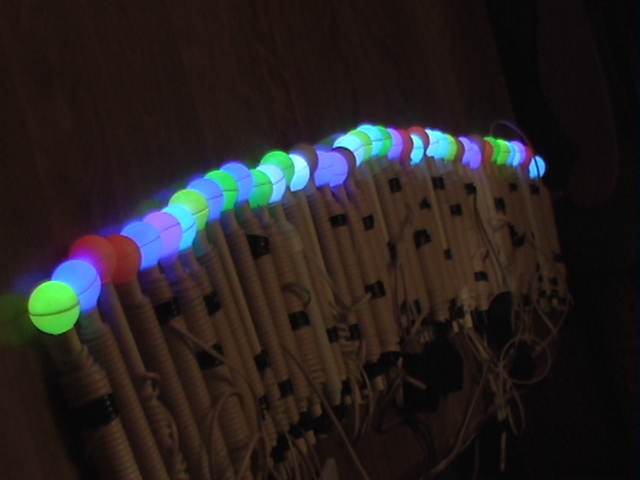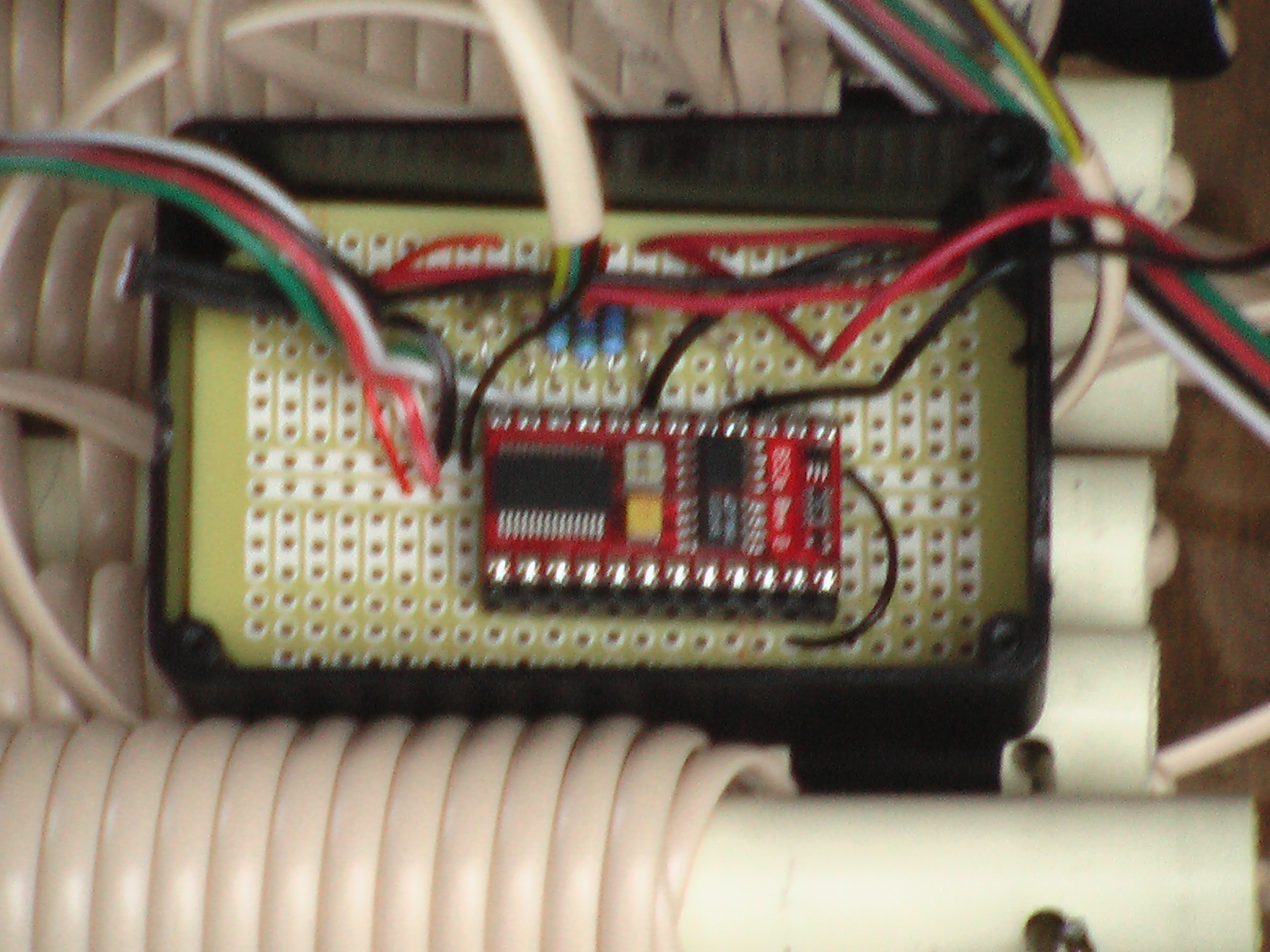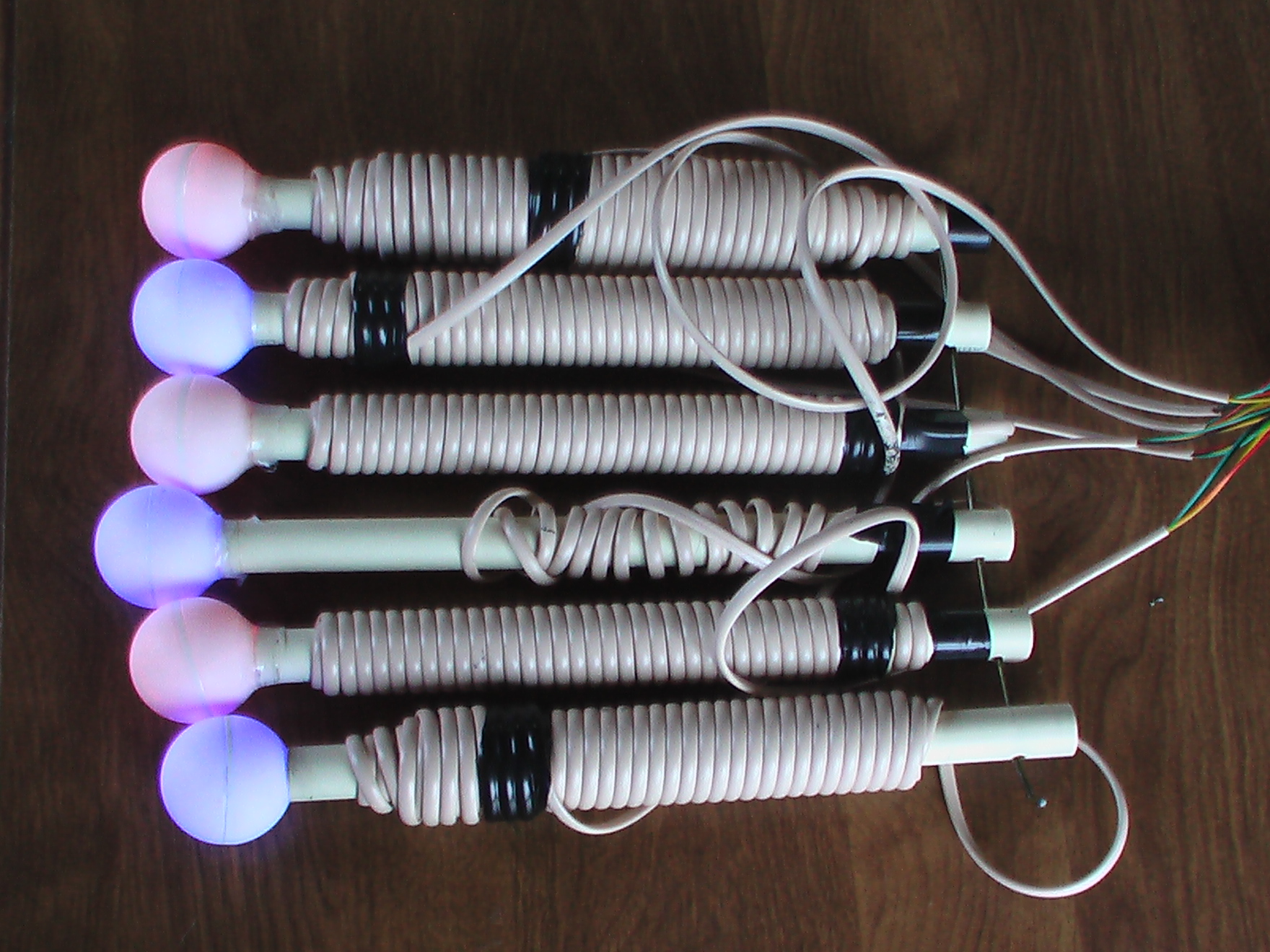help high voltage killing my chip

my hope is to have 48 tricolored led down my driveway driven by a bs2e talking to max6956. every thing works wonderful on the bench. Then i installed them·fence posts are 12' apart one light on each post for·a total of 6·per·max6956·with a total of 7 max6956. i installed 2 then things stoped working. i started to have max6956 with bad outputs. did i mention this·is horse fencing? 6000v 2 jules. well i found out the hard way i created a transformer the 48 feet of telaphone zip cord acted as 1 side and the fencing the other with my fingor conected and my feet grounded. no it was not at full intencidy but i felt it the same.·· what can i do. sheilded cable is to much $. would· a zeaner help. and where might i put it?






Comments
You may also·try a large·"bleeder"· (MOhms) resistor from your signal directly to ground.
You probably have a RF "antenna" effect more than plain transformer.·
·
You said you are using zip cord. To me that is a standard AC twin lead.
Try CAT-5, the twist of leads will attenuate the RF better.
Actually, I would do that first.
Cheers
Vaclav
·
Shielded wire might help, but you may find it necessary (and cheaper)·to bury the lamp wiring. That would almost certainly work. The easiest way to bury wire is by cutting a slit in the earth with a lawn edger.
On the other hand, simply separating the two wiring systems may be sufficient. You don't say, but I suspect you've got both sets of wires running near each other, perhaps from the top of one post to the top of the next. If that's so, try running the lamp wires much lower on the posts, with wires going up each post if you need the LEDs to be near the top.
▔▔▔▔▔▔▔▔▔▔▔▔▔▔▔▔▔▔▔▔▔▔▔▔
· -- Carl, nn5i@arrl.net
I assume your fence wires (top and bottom) are tied together at several places.
·
Any chance you could run the wires separately ( top / bottom) and "out of phase”?
·
The fence current would go in opposite direction and cancel the unwanted radiation (in theory – you mileage will vary!)
·
Just curious – how bright are the LEDs at the end?
·
To elaborate on what vaclav_sal said ... " You do have a nice radio antenna with capacitive "pickup" from both fence leads. " ... more so than capacitance, with that distance, the wire your running to your lights becomes the secondary coil of a transformer, the electric fence being the primary coil.
vaclav_sal,
"Any chance you could run the wires separately ( top / bottom) and "out of phase”?" - that could help the coupling effects regardless of whether or not it's capacitive or inductive coupling, but it may be difficult to find a fence that provides 180 Deg phase difference.
▔▔▔▔▔▔▔▔▔▔▔▔▔▔▔▔▔▔▔▔▔▔▔▔
Beau Schwabe
IC Layout Engineer
Parallax, Inc.
the fence is one big loop the current could be going in any direction. and when a blade of grass grows up and touches it it will change. will burring the wire be the cure? that is one of my fence conductors. at the charger is a ground rod for one of the conductors and the fence lines the other.
could you explain capsitive cupping. my background is in power not electronics i just started playing with the stamps in December. i love them and have a wonderful temperature datalogger on my wood boiler with 17 temperature sensors.
in a transformer is it inductive cupping?
is their a leading power factor?
am i generating vars?
these things i deal with regularly that is why i thought of a 1:1 transformer. when you deal with the distribution lines and have long runs you have to ground them or they will kill you